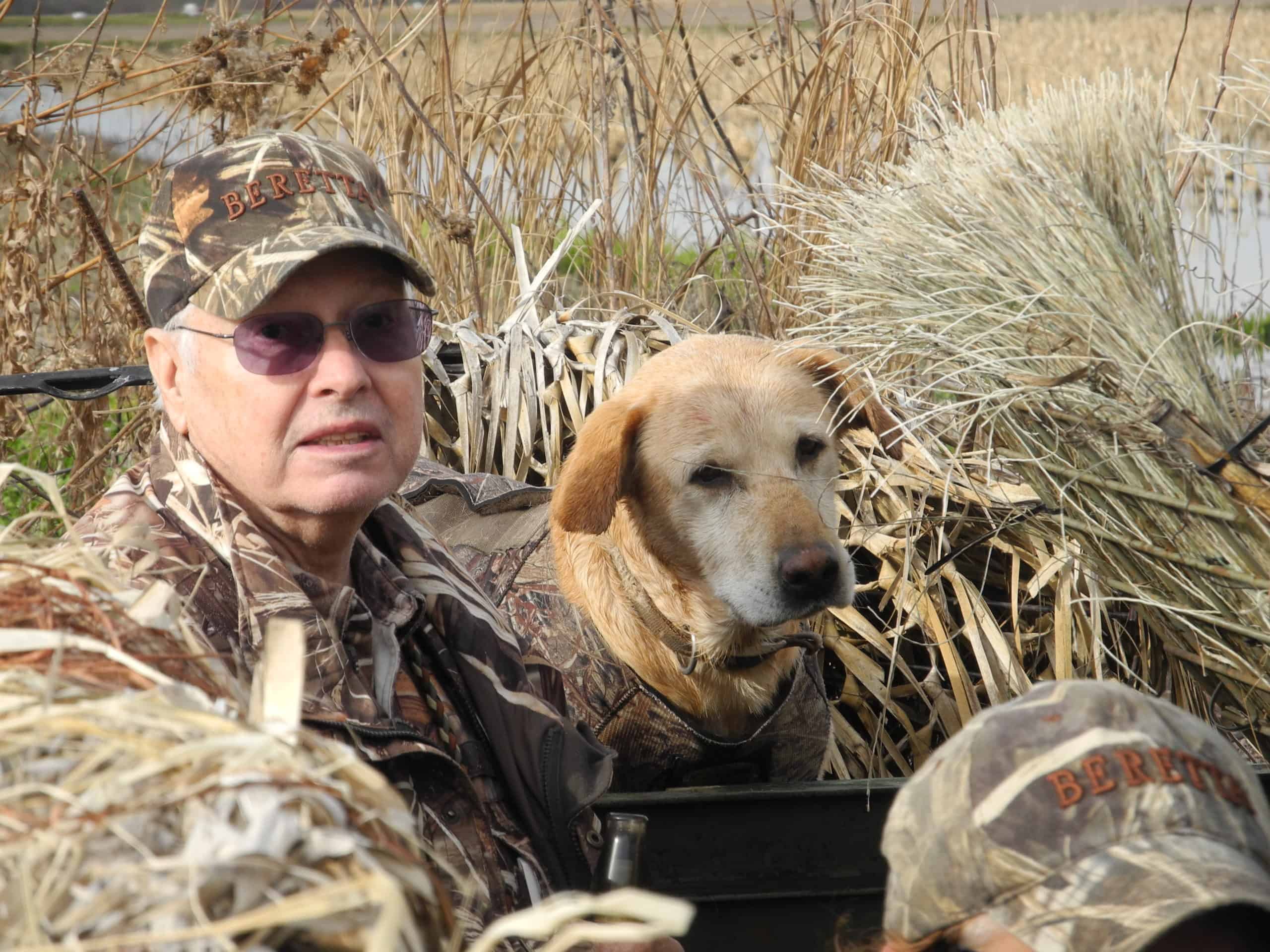by Kenneth L. Kieser
Recent mild winters have made Missouri a hot area for duck hunting. Most duck species have migrated to southern states by December, but wads of mallards mixed with an occasional gadwall or green-winged teal gorge in harvested cornfields and other row crops on grain spilled by the combines.

While states to the south get the attention, Missouri gets the ducks. Paul Knick shows off a fine brace of Missouri mallards.
Find a milo, soybean or cornfield that flooded, and the ducks will drop on that field in droves. A Missouri duck hunter’s only enemy is a hard freeze or heavy, wet snow that turns marshes, lakes and ponds into ice and drives ducks south. Lately, Missouri winters have been mild to the sorrow of Arkansas, Louisiana and hunters in other southern states.
Missouri is bordered by the Missouri and Mississippi Rivers with plenty of lakes and wildlife refuges including The Squaw Creek Federal Wildlife area in northwest Missouri and a plethora of others scattered throughout the state.
Paul Knick and Bud Burrows both hunt Mound City, Missouri by Squaw Creek Federal Wildlife Refuge in Missouri’s North Zone. They love late-season mallards. They hunt northwest Missouri until freeze and then move down to Smithville Lake, north of Kansas City to finish off the mallard season. I did not hesitate to accept their kind invitation early last December to hunt Squaw Creek mallards.
The hunt started a day or two later when we piled our equipment on a four-wheeler and rode down the top of a long dike to the blind. Our weatherman’s prediction was correct: bright stars and warm temperatures promised mallards would still be in the area.
We finally settled down in our steel blind that was surrounded on three sides by water, standing corn and decoys. A grebe swam past just as Knick started softly calling. He reminded me to keep my face down, and then continued playing a surprising tune on his duck call. He was making shorter, softer calls than I had ever heard as Burrows added pintail whistles.
I peeked through a hole in the blind to see seven pintail drakes soaring over our decoys. The sun illuminated their vivid colors as they glided, set their wings and dropped into our decoys. The graceful ducks jumped up as shotguns broke the morning silence. Our guns were merely excellent noise makers as the seven ducks disappeared over a nearby stand of pin oaks.
Later a lone mallard drake flew past, approximately 150 yards to the south. I watched as Knick slightly raised his volume and turned the duck. Whatever he said must have been hot. The completely fooled greenhead made a swing in front of our blind and dropped into the decoys. Knick shot the duck as he pumped his wings for altitude.
“Ducks have been called heavily throughout the season and can pick out a mistake,” Knick said. “Late-season ducks are not in the mood for nonsense, they get down to business. I call less, not as loud and over fewer decoys. When they don’t respond to this, I increase volume and use more standard methods. Cadence is a big key in duck calling. Ducks don’t just chatter, but speak a certain way when something needs to be said. I only raise volume when the ducks have given up and have flown a long distance.”
Later that morning a single pintail drake whooshed past like a Spitfire fighter plane doing a fly-by. Burrows used mallard sounds while Knick followed up with pintail whistles. The sleek duck made a couple of passes and started to settle in the decoys when a single shot dropped him.
The beautiful duck was more mature than normal for Missouri and was shipped to a local taxidermist. That duck was just too beautiful for anything other than a trophy and my office wall.
Knick and Burrows spent the remainder of that morning calling in mallards. We limited out and cased our shotguns to sit back and watch the sky ballet. I watched appreciatively as the veteran hunters called flock after flock of ducks to our decoys.
“We have spent a lot of years hunting ducks together in Missouri,” Burrows said. “We move up to Mound City during duck season and go home after the big freeze pushes ducks out. We’ll do this until we no longer can make the hunt.”
Missouri duck season is broken up into three sections, North, Middle and Southern Zones. The season is designed so hunters can follow the ducks as they move south ahead of freezing weather patterns. The North opens October 26 and ends December 24. The Middle Zone opens November 2 through December 31. The Southern Zone opens November 28 and runs through January 26.
Missouri’s limit is four mallards daily, and only two hens.
For more information about Missouri duck hunting, contact the Missouri Department of Conservation at (573) 751-4115.
The Union Sportsmen’s Alliance website is designed to provide valuable articles about hunting, fishing and conservation for members of AFL-CIO affiliated labor unions and all sportsmen and sportswomen who appreciate hunting and fishing and want to preserve our outdoor heritage for future generations. If you would like your own story and experience from the outdoors to be considered for our website, please email us at [email protected].




